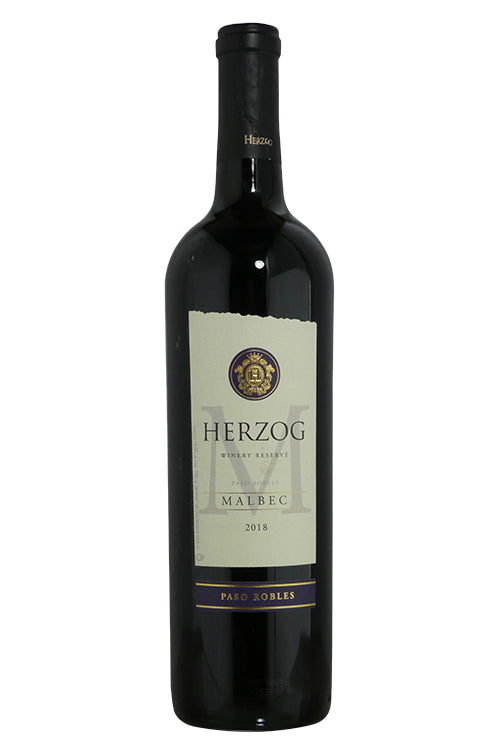1
/
of
1
Herzog Winery Reserve Malbec - 2018 (750ml)
Herzog Winery Reserve Malbec - 2018 (750ml)
Regular price
$44.99
Sale price
$44.99
Regular price
$54.99
Unit price
/
per
Availability:
1 In Stock
$25 Shipping on Orders +$299
Couldn't load pickup availability
Share :

- varietal
- Region
- Sub - Region
- Type
- Reviews
Grown mostly in South America, its popularity has made it almost synonymous with Argentina, the wine producing powerhouse which has now adopted the varietal as it's national grape. While many offer bursting juicy fruit including blackberries, cherries, and plums, the grape is also capable of extended oak-ageing adding spice box, tobacco and leather aromas, as well as a richer texture on the pallate. Originally a vineyard neighbor alongside Carmenere (another French expat) in Bordeaux, Malbec is mostly planted in the neighboring regions of south west France. The town of Cahor, just north east of Bordeaux, is probably the varietals most important region in the country, where it's required to make up at least 70% of the blend. Although a simplification, French versions tend to be drier and more tannic, however they can still display great concentration and depth.
California is one of the most diverse wine producing regions of the world. Although it has a history spanning over 200 years, it has experienced most of its growth in the last fifty years. The regions of Napa Valley and Sonoma County have become as renowned as France’s Bordeaux and Burgundy. While Cabernet Sauvignon, Pinot Noir, and Chardonnay are by far the most popular fine wine varieties, producers in the Golden State have also experimented with an unparalleled array of diverse varieties, including Zinfandel, Syrah, Nebbiolo, Sangiovese, and Tempranillo.
Paso Robles was the largest un-subdivided AVA within California at approximately 614,000 acres. By contrast, the Napa Valley appellation (which includes sixteen AVA's delineated within its bounds) is roughly one-third the area at 225,000 acres. Since the Paso Robles AVA was established in 1983, Paso Robles has grown to encompass 200+ wineries and 32,000 vineyard acres. This vineyard acreage is spread over a sprawling district roughly 42 miles east to west and 32 miles north to south. Average rainfall varies from more than 30 inches a year in extreme western sections to less than 10 inches in areas farther east. Elevations range from 700 feet to more than 2400 feet. Soils differ dramatically in different parts of the AVA, from the highly calcareous hills out near us to sand, loam and alluvial soils in the Estrella River basin. The warmest parts of the AVA accumulate roughly 20% more heat (measured by growing degree degree days) than the coolest; the average year-to-date degree days in the Templeton Gap since 1997 is 2498, while in Shandon far out east it's 2956. This difference in temperatures is enough to make the cooler parts of the AVA a Winkler Region II in the commonly used scale of heat summation developed at UC Davis, while the warmest sections are a Winkler Region IV.
Red wine is wine made from dark-coloured grape varieties. The color of red differs based on the grapes variety or varieties used.Interestingly, black grapes yield a juice that is greenish-white. The actual red color comes from anthocyan pigments (also called anthocyanins) from the skin of the grape (exceptions are the relatively uncommon teinturier varieties, which produce a red colored juice). Most of the production centers around the extraction of color and flavor from the grape skin.


